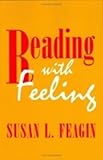Reading with Feeling : The Aesthetics of Appreciation / Susan L. Feagin.
Material type: TextPublisher: Ithaca, NY : Cornell University Press, [2018]Copyright date: ©1996Description: 1 online resource (280 p.)Content type:
TextPublisher: Ithaca, NY : Cornell University Press, [2018]Copyright date: ©1996Description: 1 online resource (280 p.)Content type: - 9781501721465
- 801/.95 23
- online - DeGruyter
| Item type | Current library | Call number | URL | Status | Notes | Barcode | |
|---|---|---|---|---|---|---|---|
 eBook
eBook
|
Biblioteca "Angelicum" Pont. Univ. S.Tommaso d'Aquino Nuvola online | online - DeGruyter (Browse shelf(Opens below)) | Online access | Not for loan (Accesso limitato) | Accesso per gli utenti autorizzati / Access for authorized users | (dgr)9781501721465 |
Browsing Biblioteca "Angelicum" Pont. Univ. S.Tommaso d'Aquino shelves, Shelving location: Nuvola online Close shelf browser (Hides shelf browser)

|

|

|

|

|

|

|
||
| online - DeGruyter Who Qualifies for Rights? : Homelessness, Mental Illness, and Civil Commitment / | online - DeGruyter An Anatomy of Trade in Medieval Writing : Value, Consent, and Community / | online - DeGruyter Why Does Literature Matter? / | online - DeGruyter Reading with Feeling : The Aesthetics of Appreciation / | online - DeGruyter The Chicago Pragmatists and American Progressivism / | online - DeGruyter Becoming William James / | online - DeGruyter Lubavitchers as Citizens : A Paradox of Liberal Democracy / |
Frontmatter -- Contents -- Acknowledgments -- Introduction -- PART ONE: EXPLANATION -- Chapter One. Abilities -- Chapter Two. Desires to Do -- Chapter Three. Mental Shifts, Slides, and Sensitivities -- Chapter Four. Simulation and Empathy -- Chapter Five. Sympathy and Other Responses -- PART TWO: WARRANT -- Chapter Six. justifying Beliefs about Emotions and Affects -- Chapter Seven. Passional Grounding -- Chapter Eight. Identifying and Individuating Emotions and Affects -- Chapter Nine. Type Warrant -- Chapter Ten. Temporal Warrant -- Chapter Eleven. Values -- Index
restricted access online access with authorization star
http://purl.org/coar/access_right/c_16ec
Feelings and other affective responses to a work of fiction are an important part appreciation and the capacity to inspire such responses is part of what is valuable about literary works of art. Susan L. Feagin's philosophical exploration of appreciation, focusing specifically on its emotional or affective components, asks us to consider aesthetic appreciation as getting the value out of the work.Appreciation involves exercising abilities. Feagin develops a psychological model for understanding how one becomes emotionally engaged with something one knows is fictional. She stresses the importance of the role of imagination in producing affective responses.Imagination is harnessed by the writer's choice of phrase or depiction of detail. Feagin cites the work of Angela Carter, Molly Keane, Heinrich Böll, Gabriel Garçia Marquez, and draws an extended example from Henry James. She notes that not all responses to a work are relevant or appropriate and discusses a variety of ways responses may be assessed. Even though assessing responses can stifle imagination, and hence threaten spontaneity and the responses themselves, the value of having affective responses to fiction depends upon our being able to make such assessments. Whatever else we may gain, appreciating a work, getting the value out of it, is one means of extending the capacities of our own imaginations.
Mode of access: Internet via World Wide Web.
In English.
Description based on online resource; title from PDF title page (publisher's Web site, viewed 26. Apr 2024)


